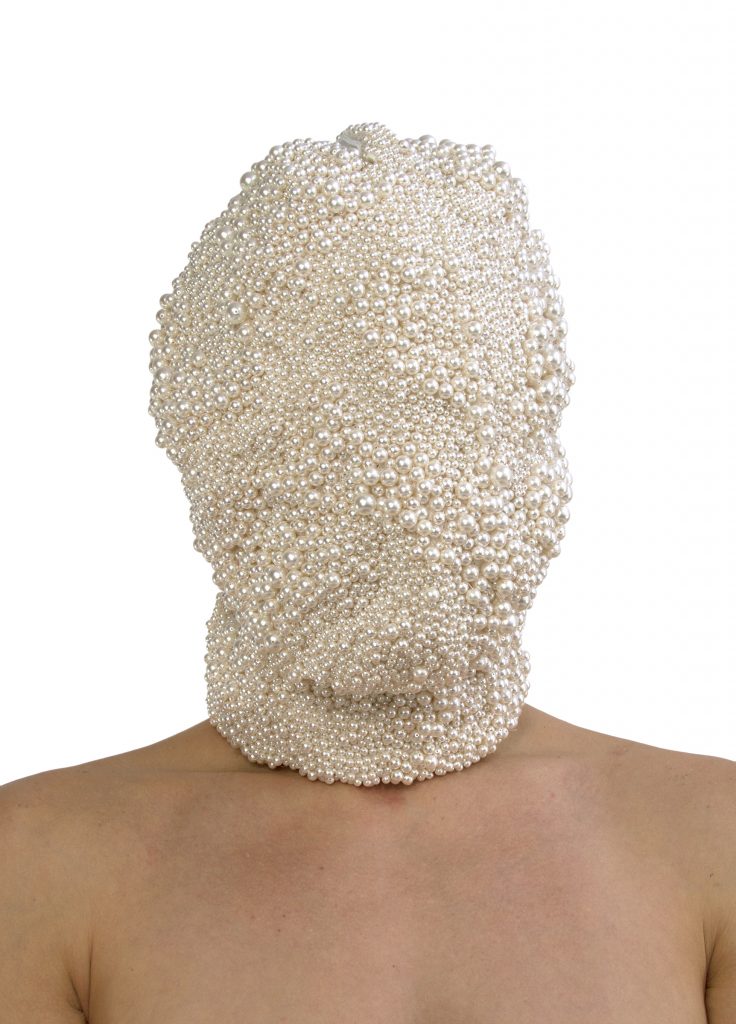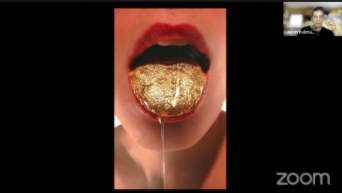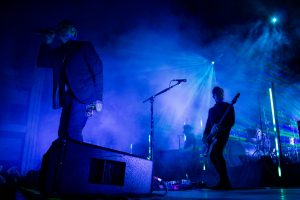Lauren Kalman combines the grotesque and the beautiful in her innovative art
Lauren Kalman combines the grotesque and the beautiful

In another edition of Syracuse University’s College of Visual and Performing Arts’ Visiting Artist Lecture Series, Lauren Kalman dissected some of her work and discussed how her sprawling journey as an artist led her to become a renowned contemporary artist. She combines the grotesque and the beautiful in order to convey empowerment and subvert the idea of purity and politeness.
Kalman, who is a visual artist from Detroit, focuses on contemporary images, sculptures, photography, videos and performances. Her modernized work delves deep into the politics of craft and constructions of the ideal. Her multi-faceted approach to new-age art is partially influenced by her parents. Her father is an industrial designer while her mother is a commercial photographer.
“As a young person, I wanted nothing to do with what my parents did, I didn’t want to look to them for inspiration, but sometimes these things are embedded and run very deep, so now I combine both of those things,” Kalman said.
Her work is centered around jewelry but is not quite jewelry itself. She combines many objects and images, specifically sculptures and glass to help her send a message of empowerment.
Kalman’s new-age art coincides well with SU’s revamped approach to its art collection. While past strategies included pursuing more traditional and established pieces of art, SU has looked for artists who can speak to the modern world and can create pieces of art that are relatable to people and issues today.
Kalman said she desires to protest “fine craft,” and instead she makes more raw and visceral art that has blossomed into her core identity as an artist.
“I became interested in the way jewelry and objects worn on the body can talk about power, beauty, sexuality and the politics of the body,” Kalman said. “If we think about jewelry and fashion, they project desires and identities in our lives every day, and that’s super powerful — even more powerful and accessible than art in a museum.”
Kalman detailed a photo of an open mouth with a gold-encrusted tongue a part of a project entitled Hard Wear. This warped combination feels right at home with her artistic direction.

“Some of these objects are quick and gestural, and I’m really interested in the spaces where the interior and the exterior of the body meet, but also the places where the beautiful and the grotesque meet,” Kalman said. “There’s a push and pull between attractive and grotesque. The mouth is erotic and seductive, but also in a time of COVID, it’s a place where disease is spread and where language comes from, so I’m really interested in these places of transgression.”
Kalman’s comfortability in dealing with the uncomfortable is part of her signature style. One of her artistic flourishes is taking normally grotesque aspects of the human body and using jewelry to recreate those images. For instance, she used acupuncture pins to portray pimples.
Kalman, who is currently an Associate Professor at Wayne State University, uses her multiple areas of curiosity to tackle various different art forms, but all of her work connects back to her core thesis of empowerment, the body and the rejection of “the perfect image.” Her identity as an artist is that she will never just stick to one focus.
“Part of me is like, ‘Why wouldn’t you just stick to one thing, wouldn’t that be so much easier?’” she said. “But it doesn’t suit me to work in that way.”






